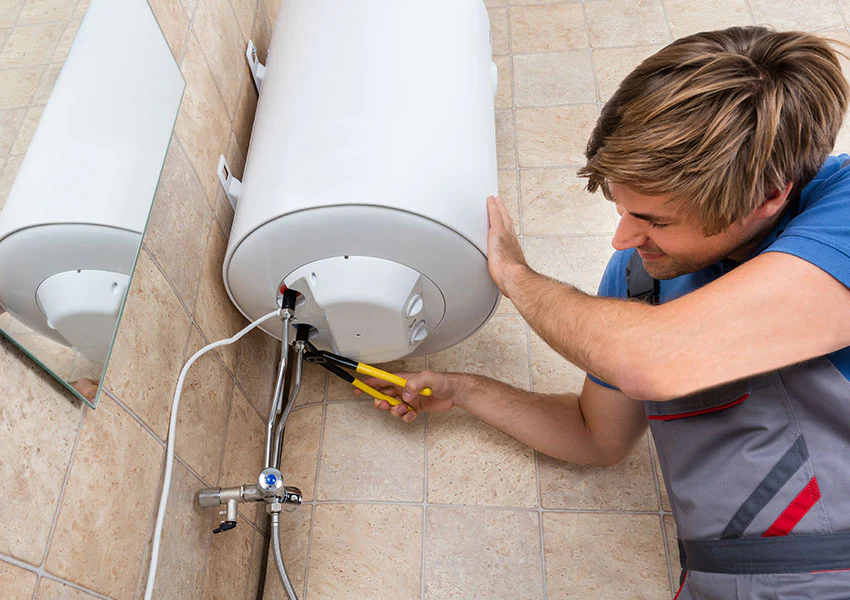Ensuring Durability of Your Home's Hot Water System: Care Tips
Ensuring Durability of Your Home's Hot Water System: Care Tips
Blog Article
We've stumbled upon this great article involving Tips on Maintaining a Water Heater below on the net and think it made sense to quickly share it with you on this page.

Hot water is crucial for everyday comfort, whether it's for a refreshing shower or cleaning meals. To guarantee your warm water system runs efficiently and lasts much longer, routine maintenance is vital. This short article gives functional suggestions and understandings on exactly how to maintain your home's warm water system to prevent disturbances and expensive repairs.
Introduction
Maintaining your home's warm water system might seem daunting, yet with a few straightforward steps, you can guarantee it operates efficiently for years to find. This overview covers everything from comprehending your warm water system to DIY upkeep ideas and knowing when to employ professional assistance.
Importance of Preserving Your Hot Water System
Routine upkeep not only extends the life-span of your hot water system however additionally ensures it runs efficiently. Ignoring maintenance can cause lowered effectiveness, greater energy expenses, and also premature failing of the system.
Indicators Your Hot Water System Demands Upkeep
Knowing when your warm water system requires attention can avoid significant issues. Watch out for indicators such as inconsistent water temperature level, weird noises from the heating unit, or corroded water.
Flushing the Water Heater
Purging your water heater eliminates debris build-up, improving effectiveness and lengthening its life.
Checking and Replacing Anode Rods
Anode rods protect against corrosion inside the tank. Checking and changing them when worn out is important.
Complicated Concerns Requiring Professional Assistance
Instances consist of major leaks, electrical issues, or if your hot water heater is consistently underperforming.
Regular Professional Maintenance Advantages
Expert upkeep can consist of thorough evaluations, tune-ups, and guaranteeing compliance with security requirements.
Checking and Changing Temperature Level Setups
Readjusting the temperature settings ensures optimal performance and security.
DIY Tips for Maintenance
You can do a number of upkeep jobs on your own to maintain your warm water system in top condition.
Checking for Leaks
Consistently check pipelines and links for leakages, as these can cause water damages and greater expenses.
Comprehending Your Warm Water System
Before diving into maintenance tasks, it's helpful to understand the basic parts of your warm water system. Normally, this includes the water heater itself, pipes, anode rods, and temperature controls.
Month-to-month Upkeep Tasks
Normal regular monthly checks can help catch small concerns prior to they intensify.
Checking Pressure Alleviation Valves
Examining the stress safety valve ensures it functions correctly and protects against too much stress accumulation.
Protecting Pipes
Insulating warm water pipelines decreases heat loss and can save power.
When to Call an Expert
While DIY maintenance is valuable, some problems require specialist know-how.
Final thought
Routine maintenance of your home's warm water system is necessary for efficiency, long life, and expense savings. By following these pointers and understanding when to seek specialist assistance, you can guarantee a trusted supply of hot water without unanticipated interruptions.
How to Maintain and Troubleshoot Your Heat Pump Water Heater
Know Your Water Heaters Error Codes and How to Clear Them
If your unit is WiFi-enabled, pay attention to the notifications your water heater system sends you and make sure to read and investigate error codes as soon as possible. If your machine has an error code readout on the unit, use your owner’s manual for the hot water heater and find out what the codes mean and how they might be affecting your water heating system. Follow the manufacturer’s directions to assess the issue and clear the code, or call a licensed plumber to take care of that for you.
Change Your Filters Monthly or As-Needed
Heat pump water heaters come equipped with an air filter, usually on the top of the unit where the water heater pulls air into the compressor. Check the filter every few months (put a reminder in your smartphone to make sure you don’t forget!). This will keep peak air flowing into your unit, helping it to work as efficiently as possible and resulting in energy savings over time.
Clean the Condensate Lines
Heat pump water heaters have a condensate drain. As the unit dehumidifies the surrounding area, the moisture has to go somewhere! Make sure to clean this condensate line every year to ensure it doesn’t get backed up with sediment or mold.
To clean the condensate lines, pour a cup of bleach in the access opening of the unit to kill any mold or mildew. Check that the bleach or water flows freely out of the lines, and unclog the lines if needed.
Flush Your Heat Pump Water Heater Annually
Heat pump water heaters are also sometimes referred to as hybrid heat pump water heaters. This is because they contain a backup heating electric heating element inside the tank: the same kind of anode rods used in traditional electric water heaters. That anode rod can become corroded over time from the minerals in your water, and it can begin to decay, break entirely, or heat less efficiently as it becomes corroded. One way to minimize or avoid this corrosion is by flushing your heat pump water heater annually. Just like flushing standard electric or gas water heaters, flushing your water heater is something that any homeowner can DIY if they have a few basic tools and some gumption.
https://www.waterheatersnow.com/blog/how-to-maintain-and-troubleshoot-your-heat-pump-water-heater

Hopefully you enjoyed reading our topic on Tips on Maintaining a Water Heater. Thanks so much for finding the time to read through our short article. Don't hesitate to pause to promote this blog if you liked it. We recognize the value of your readership.
This Website Report this page